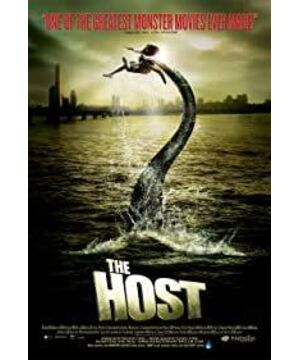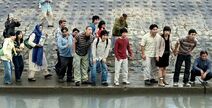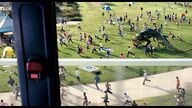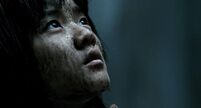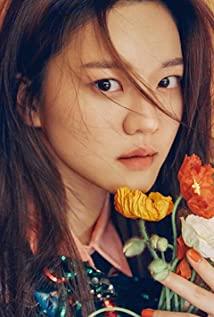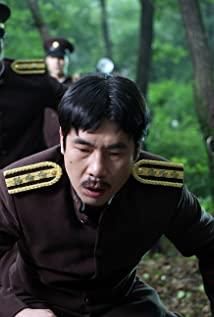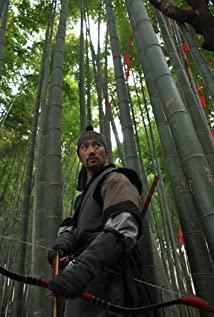After reading it, it can be said that this is the fourth work I have seen directed by Bong Joon Ho.
A good disaster film can be said to be another metaphor film. Director Bong Joon-ho does a really good job of metaphors. It looks like a disaster film. It mocks the US interference in Korea's internal affairs. I really don't know this. The judges of the Oscars have seen the monster of the Han River, and the Americans inside are not a little bit vilified.
It seems that the nuclear in a disaster monster movie is indeed family, and Feng Dao interprets it quite well on the family level. It seems discordant at first, but the family is unusually united before the crisis. Such a contrast makes the last kill. The monster's play has gained a hearty viewing experience. This disaster film that can be learned not only achieves the hearty viewing experience of commercial films, but also depicts family affection, criticizes the current society, and criticizes the current society. social class dissatisfaction.
The dissatisfaction with the social class system can be said to be very prominent in Snowpiercer and Parasite, but it is also reflected in the monster of the Han River this time. The managers' attacks are described in good detail. For example, officials in the face of disasters also charge black money.
Some of the shots in photography can be said to be very good. I still think Bong Joon-ho also has his opinions in photography. The Han River monster and the parasite are well reflected, as well as the rain scene, the murderous memory of the parasite Han River Monsters have a lot of rain scenes to create a dirty and disturbing vibe and mood.
In terms of character creation, I think the four protagonists can be very deeply rooted in the hearts of the people. Song Kanghao, who was silly and lethargic in the early stage, the college student brother who likes to drink alcohol, the sister who works slowly in the archery competition, and the father who has a discordant father-son relationship. The reason for the change in the relationship between the characters of Song Kanghao is that Song Kanghao's daughter was captured by a monster. And each character has an event to describe the character's image, such as Song Kanghao's sleepiness and stupidity in the first scene of the film, and still continue to shape it later, the brother is to explain the background of the brother's character when he returns to the company, and the sister is It's on TV. Then when the sister finally ran to find her niece, it was a character change. In fact, I think the transformation of the younger brother and the younger sister to the elder brother is in the scene of father's death. Their transformation is not out of thin air, but is constructed and rendered in each scene. I think this kind of character transformation can be learned.
Then the last thing I want to say is that the director must pay attention to the reversal when designing the shots, so as not to let the audience guess the content of the plot below the story. This can be a plus. In the end, when my brother was about to smash the monster with a wine bottle, I even thought about how the monster would explode. At this time, Director Bong turned the wine bottle and fell to the ground, and my sister lit the bow and arrow and shot it at the monster. My sister's bow and arrow appeared so many times and finally played a key role. This is like a knife at the beginning, and this knife will definitely be used to kill people. This is the truth of the play.
In addition, if you want to make this type of film in the future, you can refer to this film that I watched during the epidemic in Wuhan.
View more about The Host reviews


